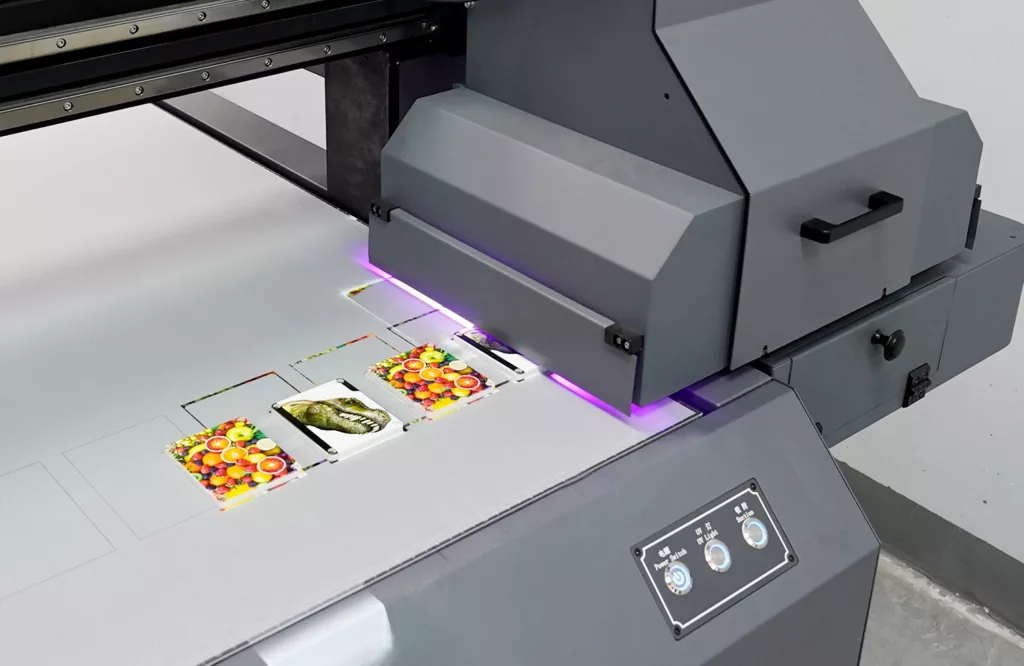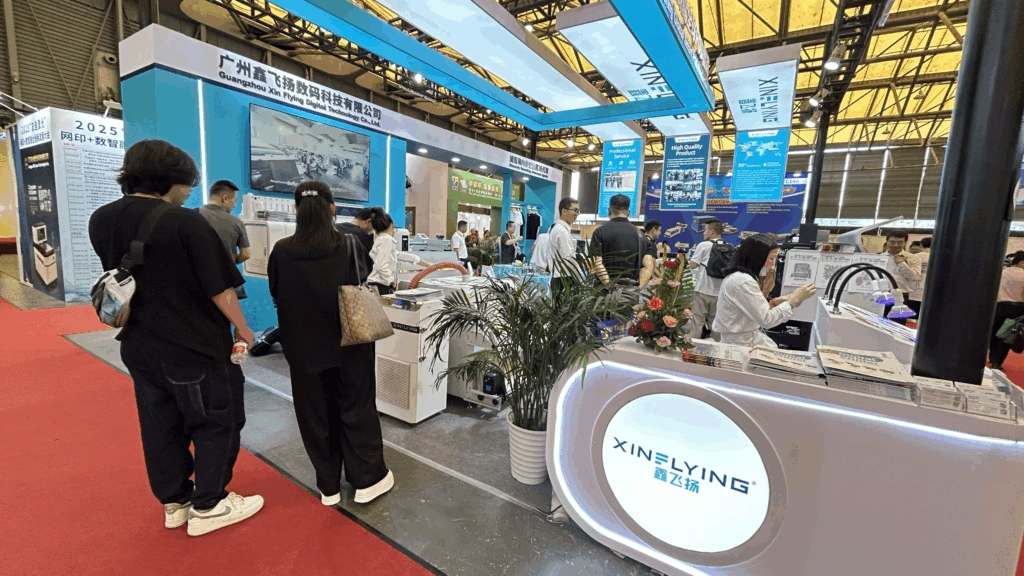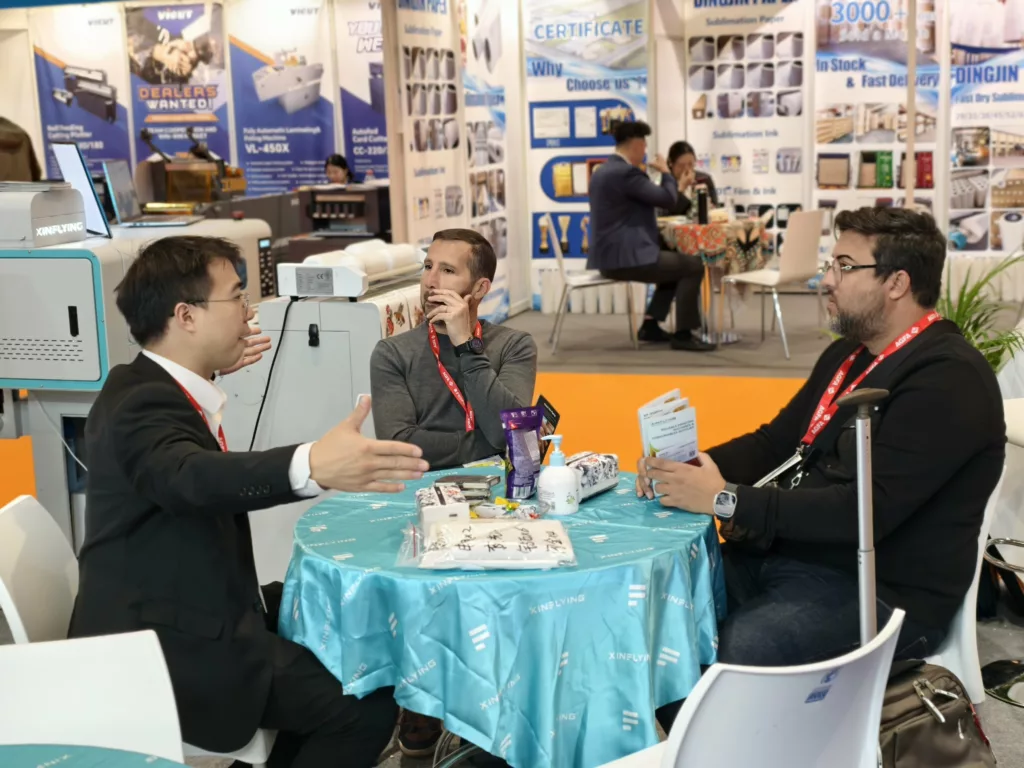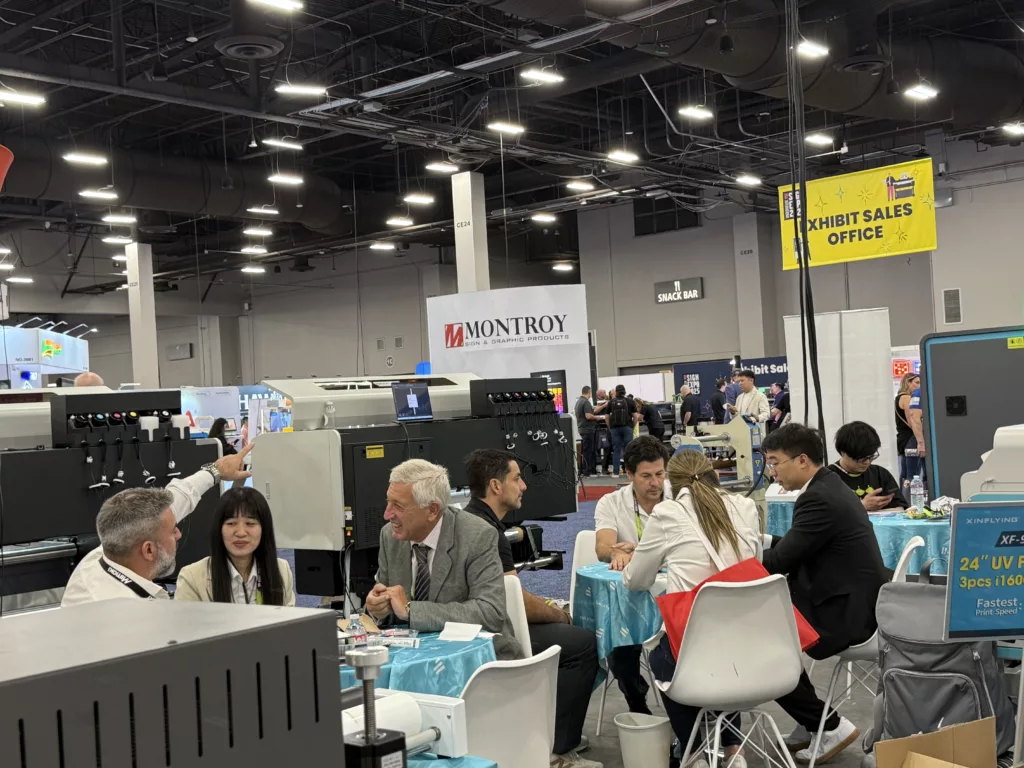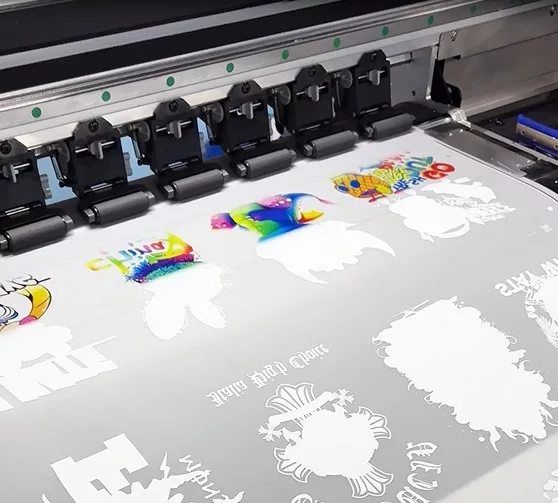DTF printers are revolutionizing the printing industry. They offer a new way to transfer designs onto textiles.This technology is known as Direct to Film printing. It provides vibrant, durable prints on various fabrics.Unlike traditional methods, DTF printing is efficient and versatile. It doesn’t require screens or extensive setup.The process involves printing a design onto a special film. แล้ว, adhesive powder is applied before heat pressing onto fabric. DTF printers are suitable for both small and large-scale production. This makes them ideal for different business needs.The technology is gaining popularity in custom apparel. It offers high-quality prints with excellent color vibrancy.
ในคู่มือนี้, we’ll explore DTF printers in detail. You’ll learn about their benefits, การใช้งาน, and how they work. DTF Printer printing colorful designs on cotton and polyester fabrics.

เครื่องพิมพ์ DTF คืออะไร?
A DTF printer is a type of printer used for Direct to Film printing. This technology allows designs to be printed onto special films and then transferred to textiles. It’s a modern printing method that bridges efficiency with quality.
The core of DTF technology lies in its ability to produce detailed, ลายพิมพ์ที่มีชีวิตชีวา. It uses a combination of specialized inks and films. This technology yields high-resolution images with impressive color depth on various fabrics.
DTF printers are quite different from traditional textile printers. They don’t require extensive preparation or screens. This lack of setup makes them suitable for quick runs and custom orders.
Key components of a DTF printer include:
1.Printer body with advanced printing technology
2.Special DTF inks for vibrant colors
3.Transfer film where images are initially printed
4.Heat press for transferring designs to fabric
This technology is adaptable to many fabrics like cotton and polyester. DTF printers are versatile, supporting various design complexities and color schemes. They open new possibilities for businesses in custom apparel and promotional products.
How DTF Printing Works: The Step-by-Step Process
DTF printing is an innovative process that transforms digital designs into wearable art. It begins with creating the artwork using design software, which is then prepared for output on a specialized DTF printer.
The first step involves printing the image onto a specially coated DTF film. This film captures every detail, while a layer of white ink is typically printed beneath the color layer to boost vibrancy and ensure the design stands out on any fabric color.
หลังจากการพิมพ์, a fine adhesive powder is applied to the wet ink on the film. This powder acts as a binding agent, enabling the design to adhere firmly to the fabric during the transfer stage.
ต่อไป, the film is cured. Using controlled heat, the adhesive bonds with the ink, preparing the transfer for application. This curing step is usually performed with a heat press or curing oven.
The final step is transferring the design onto the fabric. By pressing the film onto the garment with a heat press, the heat and pressure fuse the image seamlessly into the material, resulting in a durable and vibrant print.
Key steps in the DTF printing process include:
- Design creation in graphic software
- Printing the design on DTF film
- Applying and curing adhesive powder
- Heat pressing the design onto fabric
This process enables high-quality prints with vibrant colors and crisp details. DTF printing is not only efficient and versatile but also highly regarded for its durability and impressive visual results.

DTF Transfer: Materials and Equipment Needed
To execute DTF transfers effectively, the right materials and equipment are essential. The core component is the DTF printer, which is specifically engineered for this printing process. A high-quality DTF printer ensures precise, vivid image output onto the film.
DTF film plays an equally important role. This specially coated film holds the printed design before it is transferred to fabric and is designed to withstand high temperatures without warping during the transfer process.
DTF inks—typically CMYK plus white—are formulated to deliver vibrant, งานพิมพ์ที่ยาวนาน. They adhere to the film and later to the fabric through heat activation and adhesive bonding.
Adhesive powder is then applied to the printed film. This powder is what allows the ink to bond securely to the fabric during pressing, ensuring the print remains durable even after repeated washing.
ในที่สุด, a heat press is required to complete the transfer. It provides the necessary heat and pressure to move the design from the film onto the fabric, creating a smooth and lasting finish.
Key materials and equipment include:
- เครื่องพิมพ์ดีทีเอฟ
- ฟิล์มดีทีเอฟ
- หมึก DTF(CMYK and white)
- Adhesive powder
- กดความร้อน
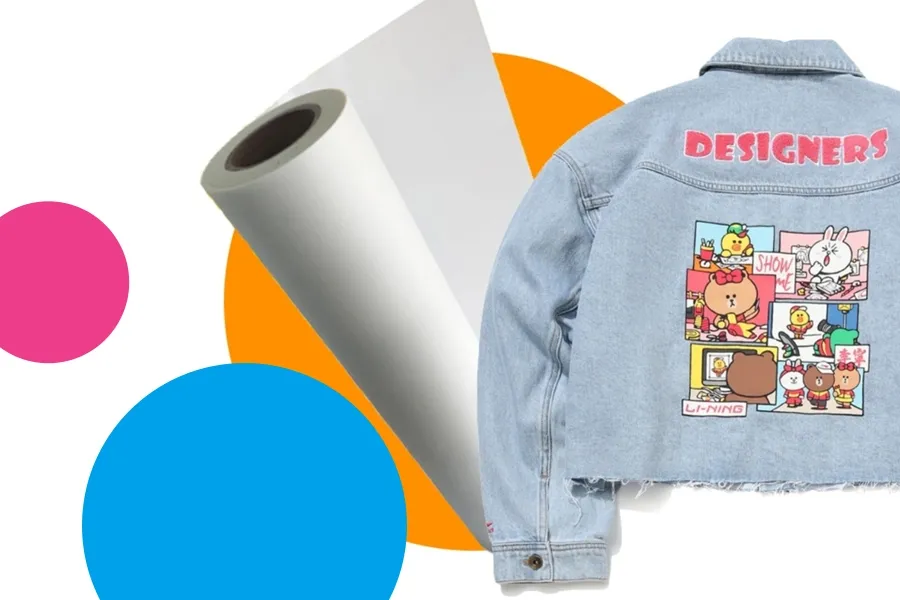
Key Benefits of DTF Printing
DTF printing offers several advantages that make it an appealing choice for many businesses.
One of the primary benefits is its versatility. DTF printers can print on a wide range of fabric types, from cotton to polyester and blends.
The printing process supports elaborate designs with high color accuracy. DTF printers can produce sharp, vibrant images with a wide color gamut.
This makes them ideal for intricate graphics and logos.
Another advantage is the durability of the prints. DTF prints are resistant to fading and cracking.
They maintain their appearance even after multiple washes, offering long-lasting quality.
The process is also cost-efficient, particularly for short runs. Unlike screen printing, DTF doesn’t require extensive setup. This reduces both costs and waste, making it ideal for custom orders and small batches.
DTF printing is also user-friendly. Modern DTF printers come with intuitive interfaces and require minimal maintenance, making them accessible to both beginners and experienced professionals.
ในที่สุด, DTF technology allows for quick turnaround times. The streamlined workflow and ability to bypass lengthy setups make it perfect for on-demand printing services.
Key benefits include:
- Quick turn around time soon to any garment within seconds.
- Versatility in fabric types
- High color accuracy and detail
- ทนทาน, งานพิมพ์ที่ยาวนาน
- Cost efficiency in short runs
- การดำเนินงานที่เป็นมิตรต่อผู้ใช้
DTF Printing vs. Other Printing Methods
When comparing DTF printing with other techniques, several factors set it apart. Traditional screen printing involves using a stencil to create designs, which can be labor-intensive and costly for small runs. DTF printing simplifies the process by eliminating the need for screens and stencils.
Another common method is direct-to-garment (ดีทีจี) การพิมพ์, which applies ink directly onto fabric. DTG excels in detail but struggles with complex fabrics. ในทางตรงกันข้าม, DTF can print on a variety of materials without compromising quality.
Sublimation printing is favored for polyester, but it’s not versatile with other fabrics. การพิมพ์ DTF, อย่างไรก็ตาม, handles different textile types efficiently. This adaptability makes it a preferred choice for customized apparel.
Heat transfer vinyl (เอชทีวี) requires cutting and weeding designs before pressing them onto fabric. This process can be time-consuming and limits design complexity. DTF printing bypasses these limitations with a streamlined workflow.
สรุป, DTF printing offers a blend of versatility, ประสิทธิภาพ, and detail that sets it apart from other methods.
- HTV limits design complexity
- Screen printing requires stencils
- DTG struggles with varied fabrics
- Sublimation limited to polyester
Applications of DTF Printers in the Industry
DTF printers are revolutionizing multiple sectors, with their versatility being a major advantage. ในวงการแฟชั่น, they are widely used to produce custom apparel and limited-edition pieces. Designers value the ability to experiment with unique patterns and intricate graphics.
Promotional products also benefit from DTF technology. Businesses can offer personalized items such as tote bags, หมวก, and custom gear to enhance brand visibility. This level of customization appeals to both small businesses and large corporations.
DTF printing also excels in the gift market by enabling bespoke, personalized products. Consumers can create unique designs on a wide range of items, from T-shirts to mugs. This flexibility allows businesses to expand their product offerings without the burden of excess inventory.
Even beyond clothing, DTF printers find uses in printing on accessories, ตกแต่งบ้าน, และอื่น ๆ.
This adaptability allows businesses to venture into numerous niches with confidence and creativity.
Accessories and home décor itemsr promotional products, ก เครื่องพิมพ์ดีทีเอฟ สามารถเป็นผู้เปลี่ยนเกมได้.
- Custom apparel and fashion
- Promotional items and corporate gifts
- Personalized gift solutions
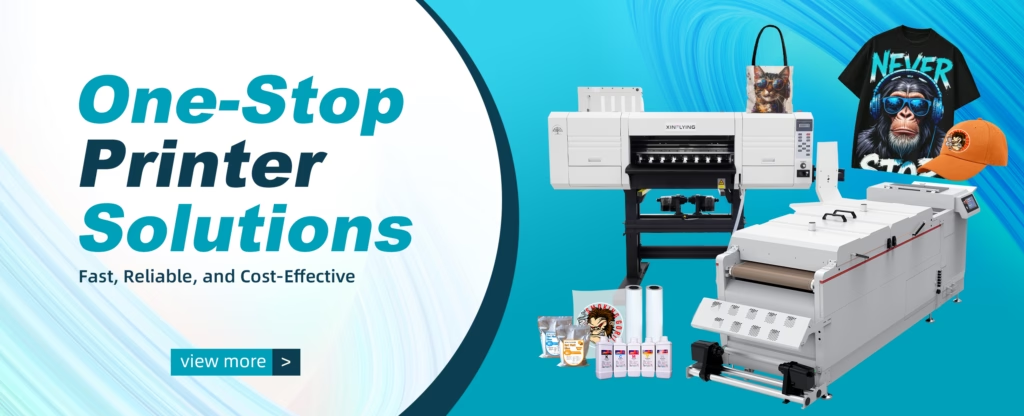
Choosing the Right DTF Printer for Your Needs
Selecting the ideal DTF printer involves considering several key factors to meet your business needs. อันดับแรก, evaluate the scale of your operation. Small businesses may benefit from compact models, while larger enterprises might require high-capacity machines.
ต่อไป, assess how well the printer integrates with your current workflow. Choose features that work smoothly with your existing software and systems. A user-friendly interface can also make the transition easier for your team.
Budget is another critical factor. While upfront costs vary, ensure the printer’s capabilities justify the investment. Consider long-term savings and the potential returns that come from producing high-quality prints.
ในที่สุด, think about the range of materials you plan to print on. Select a printer that supports various substrates, เช่นผ้าฝ้าย, โพลีเอสเตอร์, และผสมผสาน. Greater material versatility helps expand your product offerings and market opportunities.
สุดท้ายนี้, assess the support and warranty options provided by the manufacturer.
A reliable support system guarantees smoother operation and quick resolution of issues.
- Scale of operation
- Workflow compatibility
- Budget considerations
- Material compatibility
- Support and warranty
Tips for Successful DTF Printing
Achieving optimal results with DTF printing requires careful preparation and attention to detail. Start by choosing high-quality films and inks specifically designed for the DTF process. Using inferior materials can negatively impact both vibrancy and durability.
Temperature and pressure settings are also critical when operating a heat press. Always follow the manufacturer’s guidelines to ensure strong adhesion and vivid colors. You may need to experiment to find the ideal settings for different fabrics.
Regular maintenance is essential to prevent costly downtime and maintain consistent print quality. Clean the print heads regularly and check for clogs to ensure smooth operation. A reliable maintenance routine will also extend the lifespan of your equipment.
ในที่สุด, invest time in creating well-prepared artwork files. High-resolution designs help ensure your final prints meet expectations and accurately capture fine details. Using graphic design software optimized for DTF workflows can make this process even more efficient.
- Create high-resolution artwork files
- Select quality films and inks
- Adhere to heat press settings
- Maintain regular printer upkeep
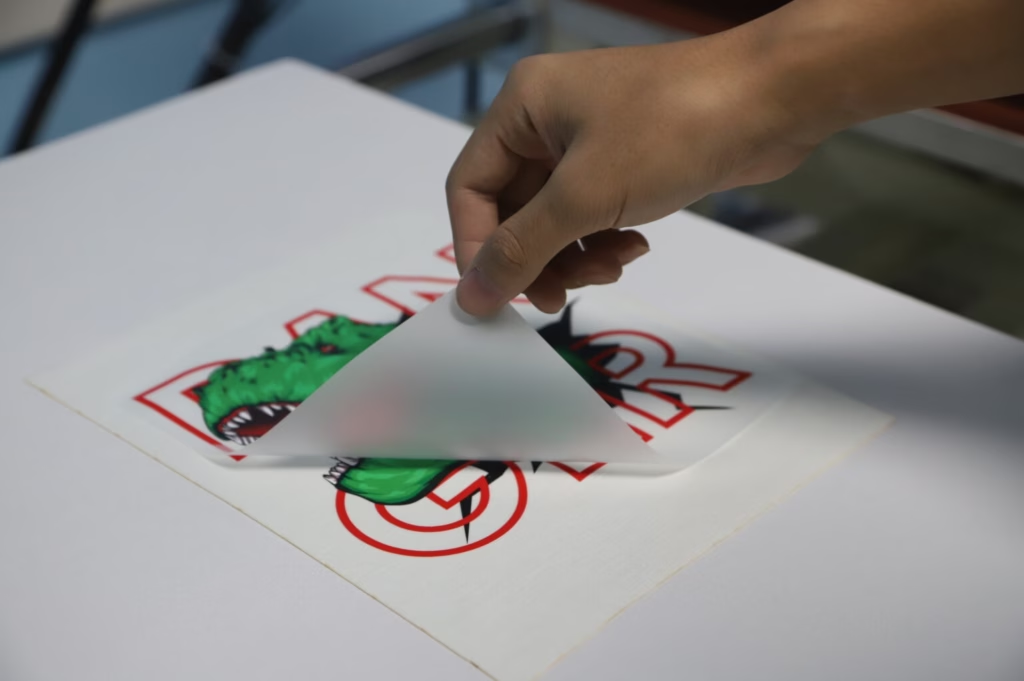
Maintenance and Troubleshooting for DTF Printers
Proper maintenance of your DTF printer ensures long-term reliability and consistent performance. Regularly clean the print heads to prevent clogs that can impact print quality, and always use manufacturer-recommended cleaning solutions for optimal results.
Monitor ink levels frequently to avoid interruptions during production. Running low on ink can cause faded prints and disrupt your workflow, so it’s wise to keep spare cartridges on hand to minimize downtime.
Address minor issues promptly to prevent them from developing into major problems. If you notice lines or streaks on your prints, check the alignment and calibration settings. A quick nozzle check can help determine whether deeper maintenance is required.
ในที่สุด, keep your printer firmware up to date to benefit from performance enhancements and new features. Periodically check for manufacturer updates to ensure your printer continues operating at its best.
- Clean printer heads regularly
- Monitor and maintain ink levels
- Address print quality issues promptly
- Update firmware for new features
อนาคตของเทคโนโลยีการพิมพ์ DTF
DTF printing technology continues to evolve, with advancements improving speed, คุณภาพ, and overall efficiency. New innovations in inks and films are enabling even more vibrant and durable prints, helping businesses meet the rising demand for high-quality customized products.
Future developments are likely to put greater emphasis on eco-friendly practices. As sustainability becomes a global priority, the industry is moving toward reducing waste and adopting more environmentally responsible materials—aligning with both consumer expectations and industry standards.
The scope of DTF applications is also expected to expand. Beyond textiles, DTF printers may find increased use in sectors such as packaging, เครื่องประดับ, and even electronics. This versatility will broaden the technology’s industrial footprint and open new opportunities for innovation.
นอกจากนี้, advancements in artificial intelligence and automation will help streamline production workflows. Reduced manual intervention and improved precision will enhance efficiency. As these technologies integrate further, DTF printing is poised to transform the customization landscape.
- Integration of AI and automation
- Advancements in ink and film quality
- Focus on eco-friendly methods
- Expanded applications across industries
บทสรุป: Is a DTF Printer Right for You?
Deciding whether a DTF printer is right for your business involves evaluating a few key factors. Start by considering your production volume and budget. DTF printers are particularly beneficial for businesses that focus on customized apparel and need flexible, on-demand printing capabilities.
You should also assess the types of fabrics you plan to work with. DTF technology performs well on cotton, โพลีเอสเตอร์, and fabric blends, making it a versatile option that can meet a wide range of customer needs.
ในที่สุด, consider long-term benefits such as durability and print quality. If these factors align with your goals, a DTF printer can be a highly valuable investment. The right choice could transform your printing capabilities and expand your creative possibilities.




























